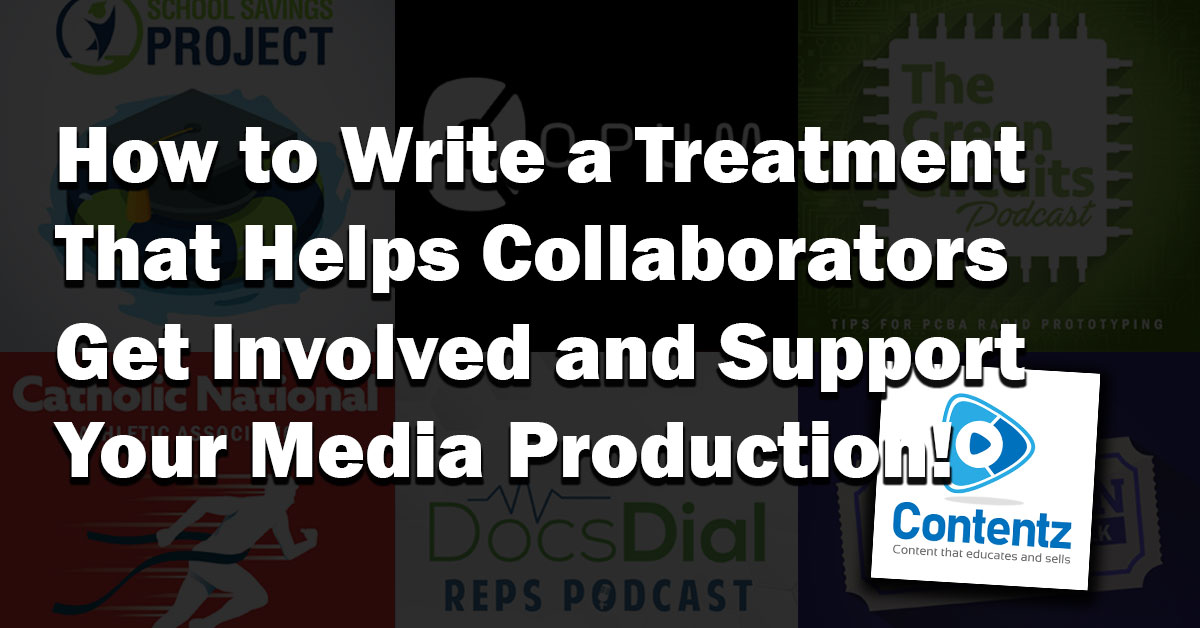Boomer Elmsdale

A treatment is a document that presents the story idea of your show before writing the entire script. It serves as a working document in many cases, where collaborators can understand your concept and continue to improve your plan until production.
Once production starts, then the treatment can serve as the outline of how things came to be. Think of the treatment as a style guide that can be referenced in order to make sure your plans are coming together correctly.
Write the Working Title of your production. Try to keep it concise and specific to your market and objectives.
The summary should be 100-200 words that illustrate who, what, when, where and why. A collaborator can ideally read this summary and get a sense about how the show works and what it is about. Framing devices comparing your show to two other shows can be helpful. For example: it’s like Good WIll Hunting meets daily show. A reader immediately thinks of understated smart people on a humorous talk show. It gets them there quickly.
Try to establish numbers that you are trying to reach. What is the objective of the show as it relates to your target audience? Here are a couple of examples: we want to reach 1,000 subscribers on YouTube. We want to get 10,000 streams on our channel this year.
Think through how you will achieve the objectives with your project. Support the objectives with strategies that you write out to get there.
The tasks section should illustrate what you have to do in order to execute your strategies. This will become a list that can be used by you and your production team to successfully build out your production.
Beyond the main points of your treatment, it is important that you collect ancillary information about your organization so you can continue maintaining a consistent voice between collaborators.
Ancillary information is part planning and part legacy information about the business. We have assembled some examples below to help illustrate other stuff to think through and document in your treatment.